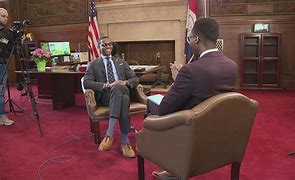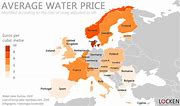In the midst of the COVID-19 pandemic, Justin Bibb found solace in a vast green space near Cleveland’s lakefront. His experience highlighted the importance of accessible green areas for mental and physical well-being – something he realized was lacking for many city residents.
Transitioning from a cramped apartment to becoming the 58th mayor of Cleveland in 2021, Bibb embraced the concept of the “15-minute city
” to make essential services easily reachable within walking or biking distance. His vision includes ensuring that all residents can access a green space within a 10-minute walk by 2045.
Cities like Cleveland are at the forefront of climate action, taking significant steps to combat climate change independently from federal support. By electrifying public transportation, enhancing energy efficiency in buildings, and promoting renewable energy sources like rooftop solar panels, cities are leading sustainable initiatives that reduce carbon emissions and adapt to extreme weather events.
As Mayor Bibb aptly put it, “
Because Donald Trump is in the White House again, it’s going to be up to mayors and governors to really enact and sustain momentum around addressing climate change at the local level.
” City leaders have a deep understanding of their communities’ needs and can swiftly implement policies that resonate with residents.
Kate Johnson, regional director for North America at C40 Cities, emphasized how local leaders play a crucial role in driving climate action based on community priorities. She stated, “
They’re on the ground and they’re hearing from their residents every day so they have a really good sense of what the priorities are.”
Shifting towards clean energy solutions not only reduces carbon footprints but also generates employment opportunities and cost savings. For instance, initiatives like providing free solar panels to low-income households have significantly reduced utility bills while promoting sustainability.
Innovative programs such as Seattle’s insulation projects and Boston’s Equitable Emissions Investment Fund demonstrate cities’ commitment to enhancing energy efficiency in buildings. These efforts not only lower energy consumption but also improve indoor comfort levels and health outcomes for residents.
The deployment of heat pumps in cities like New York City aims to create more energy-efficient homes powered by renewable sources. Additionally, creating new green spaces and incentivizing electric vehicle usage contributes not only to reducing emissions but also improves public health by mitigating pollution-related illnesses.
Elizabeth Sawin from the Multisolving Institute highlighted how cities’ actions go beyond environmental benefits by positively impacting public health outcomes. She emphasized that cleaner air resulting from urban sustainability efforts can lead to fewer respiratory issues among vulnerable populations.
By investing in sustainable infrastructure projects such as parks, solar farms, and efficient buildings, cities stimulate job growth both locally and regionally. The economic advantages extend beyond city limits as renewable energy projects benefit rural areas through job creation and revenue generation.
Mayor Bibb stressed the pivotal role of local government officials in connecting climate policies with everyday experiences. He acknowledged that articulating these connections effectively is vital for garnering public support for sustainable initiatives at both local and national levels.�
As American cities continue their journey towards sustainability independently amidst changing political landscapes,
they exemplify resilience
and determination
to build
a greener future
for generations
to come.









Leave feedback about this